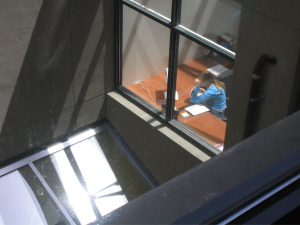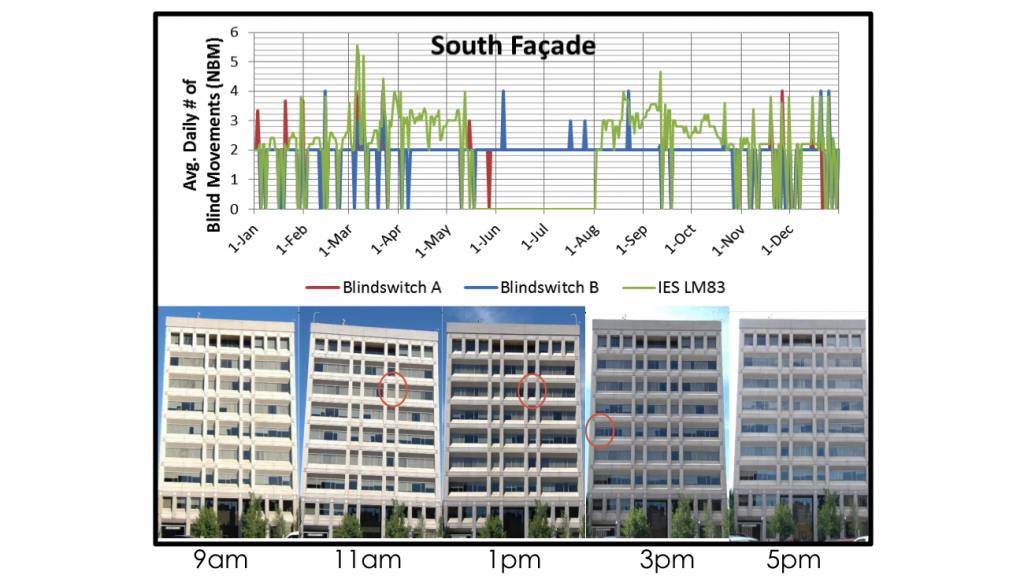
“too much daylight” as well as “too little daylight” may affect the occupants’ physical well-being
Daylighting is a common energy-efficiency strategy that also boasts a myriad of other human benefits (Reinhart & Selkowitz, 2006; Van Den Wymelenberg, 2014). Successful daylighting design that saves energy and improves human satisfaction incorporates many technologies, spans several disciplines, and requires attention throughout the design process. Blinds are quite common in spaces designed for daylighting (HMG PIER Review, 2012; Nezamdoost & Van Den Wymelenberg, 2016, 2017), since almost any daylighting design will bring with it some period of low angle sunlight, causing intermittent glare and requiring mitigation.

Realization of daylight and energy modeling standpoints
Moreover, with the latest published version LEED (v4), a greater emphasis is now being placed on implementation of glare control devices in buildings to protect occupants from sunlight exposure and subsequent glare and thermal stress.
Blind position and operation affect the amount and distribution of daylight entering a building as well as all forms of thermal transfer through windows. Daylight-sensing lighting control holds the potential to save significant energy, however, realized savings are reduced if window blinds are closed. Blinds have the potential to reduce cooling energy and peak cooling demand, especially if located outside of the thermal envelope. Effective daylight-sensing lighting controls can also reduce cooling loads by minimizing waste heat from lights. However, these potential impacts cannot be determined without accurate manual blind models.

Blind movement study
Recent studies conducted by Nezamdoost and Van Den Wymelenberg, show that current manual blind use candidates are too active and behave like an automated shading system. Overall, in order to develop a reliable manual blind use pattern for future use in simulation broadly, and energy codes, and daylighting standards specifically, additional human factors and post occupancy research of manual blind use in real buildings is needed.
This post is part of a blog series sharing information covered at the Health Energy Research Consortium in Portland, OR May 4-5, 2017.
Reinhart, C. & Selkowitz, S., (2006). Daylighting—Light, form, and people. Energy and Buildings, 38(7), pp.715–717.
Heschong Mahone Group (2012). Daylight Metrics – PIER Daylighting Plus Research Program, California Energy Commission.
Nezamdoost, A., & Van Den Wymelenberg, K. (2016). SENSITIVITY STUDY OF ANNUAL AND POINT-IN-TIME DAYLIGHT PERFORMANCE METRICS: A 24 SPACE MULTI-YEAR FIELD STUDY. IBPSA-USA Journal, 6(1).
Nezamdoost, A., & Van Den Wymelenberg, K. G. (2017). Revisiting the Daylit Area: Examining Daylighting Performance Using Subjective Human Evaluations and Simulated Compliance with the LEED Version 4 Daylight Credit. LEUKOS, 13(2), 107-123.
Van Den Wymelenberg, K. G. (2014) Visual Comfort, Discomfort Glare, and Occupant Fenestration Control: Developing a Research Agenda, LEUKOS: The Journal of the Illuminating Engineering Society of North America, 10:4,207-221
